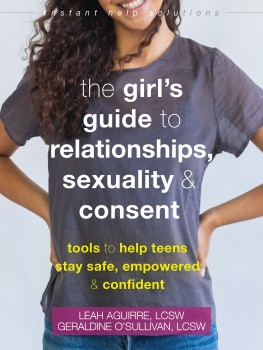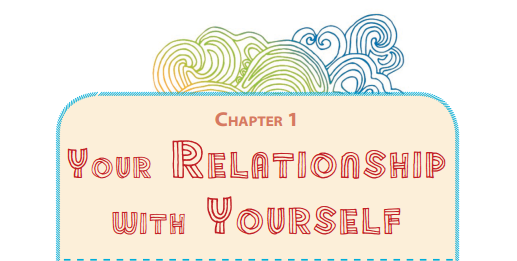Published in 2010 by The Rosen Publishing Group, Inc. 29 East 21st Street, New York, NY 10010
Copyright 2010 by The Rosen Publishing Group, Inc.
First Edition
All rights reserved. No part of this book may be reproduced in any form without permission in writing from the publisher, except by a reviewer
Library of Congress Cataloging-in-Publication Data
Payment, Simone.
Friendship, dating, and relationships / Simone Payment. 1st ed. p. cm.(Teens: being gay, lesbian, bisexual, or transgender) Includes bibliographical references and index. ISBN 978-1-4358-3578-8 (library binding) 1. TeenagersSexual behaviorJuvenile literature. 2. GaysJuvenile literature. 3. Gender identityJuvenile literature. 4. Interpersonal relations Juvenile literature. I. Title. HQ27.P378 2010 306.76dc22
2009014866
Manufactured in the United States of America
INTRODUCTION
Y ou may be reading this book because you already know you're gay, lesbian, bisexual, or transgender (GLBT). Maybe you have a friend or sibling who is GLBT and want more information. Or maybe you're wondering if you might be GLBT but aren't sure.
Part of being a young adult is questioning who you are as a person. What are you good at? What kind of friend are you? What do you like to do in your spare time? What kind of career do you want to pursue? Naturally, this process of self-discovery also includes what kind of person you're attracted to and what kind of person you think you could fall in love with. Answers to many of these questions don't come right away. You might not have definitive answers in two weeks or two yearsor even twenty years. People are always changing, and finding these answers is an evolving process.
This book explores the relationships that GLBT teens have with themselves, their friends, and with people they might choose to date. Dating and relationships are an important part of the teen years, and it's normal to have lots of questions. For GLBT teens, these questions may be different from those of their straight counterparts. Sometimes, it can be difficult to get answers. Even well-meaning, sympathetic parents and siblings may have difficulty answering questions about GLBT relationships.
Rest assured, there are answers. If you are a GLBT teen, you are not alone. Many other people have had similar experiences, questions, and worries. There are many people and organizations that can help you sort through your feelings and find answers to your questions. If you are a GLBT teen, it doesn't mean there is something wrong with you. Being GLBT is not something you need to change. In fact, it is not something you can< change. Over time, society has become more accepting of these facts, and more and more teens feel comfortable acknowledging that they are GLBT.
In this book, we'll discuss what it means to be GLBT We'll talk about the process of coming out, or telling your family and friends that you are GLBT We'll discuss the importance of friendships, and you'll also find information about where to meet other GLBT teens. If you're thinking about dating, this book can help you decide if you are ready. If you are already dating, this book discusses potential problems or hazards you might encounter, and how to deal with the end of a relationship.
T hinking about your sexual orientation or gender identity can be scary and confusing, but it can also be exciting and rewarding. It's important that you be patient with yourself. No one says you have to know everything about yourself at age fifteen, eighteen, or even thirty-five. Think things through, and get as much information as you can to help you along the way.
Remember that there is no "right" answer to your questions about your sexual identity. Sexual orientations, such as straight, gay, lesbian, bisexual, and transgender; are all normal varieties of human sexuality. Not all people think that being GLBT is normal, so some people may be less accepting of those who are GLBT However, medical and psychological organizations like the American Academy of Pediatrics, the American Psychological Association, and the National Association of Social Workers agree that if you are GLBT, you are just like anyone else. Being GLBT is perfectly normal.
What Is GLBT?
"GLBT" is an acronym for gay, lesbian, bisexual, or transgender. "Gay" is a general term used to describe men who are attracted to other men, although it can also be used to describe anyone who is attracted to members of the same sex. Lesbians are women who are attracted to other women. Bisexuals can be attracted to men and women. Transgender people may find that their biological sex does not match their gender identity. A person's sex, whether it is male or female, is based on biological characteristics. A person's gender is based on whether he or she feels male or female. The gender that a person identifies with is known as his or her gender identity. A transgender person might identify as a woman, but have been born biologically male. The way that a person manifests or exhibits his or her gender is known as gender expression.
Gender includes traditional ideas of how men or women are supposed to look and behave, how they are supposed to dress, and what they are supposed to enjoy. For example, men were once expected to wear pants, like sports, and have short hair. Women were once expected to wear dresses, enjoy cooking, and have long hair. Over time, however, traditional gender expectations have changed. For example, today it's perfectly acceptable to most people if women have short hair and like sports, and if men like cooking and have long hair.
Many colleges and universities now offer classes on GLBT topics and issues. This professor at San Francisco State University conducts a class on GLBT cultures.
For people who are transgender, their biological sex and their gender identity do not match. Transgender people may feel that their body just does not correspond with how they feel on the inside, or with how they want to act or dress. For example, as a child, a transgender person born female may have felt uncomfortable when her parents dressed her in a skirt. She may have preferred to play rougher games with her male classmates. A transgender person born male may have wanted to wear feminine and not masculine clothing, and he may have felt trapped in the wrong body.
Many teens may have had feelings like this at one time or another. In fact, most people have occasionally wondered what it would be like to be a member of the opposite sex. Transgender people, however, think about that possibility more frequently, and their feelings are much stronger. They may find that these feelings become stronger as they grow older. The teen years can be particularly difficult for them. When their body begins to develop male or female sex characteristics, it can be hard to ignore what they feel.



















